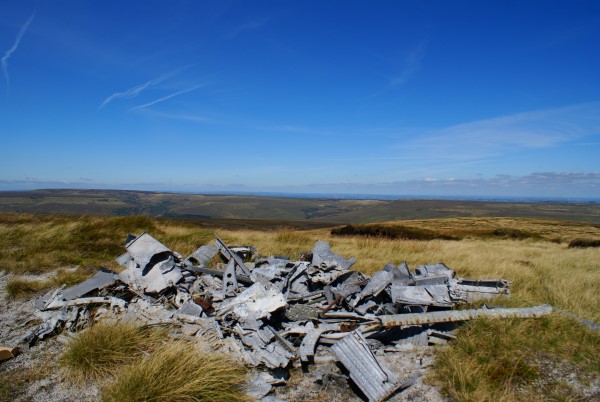Defiant Mk.I N3378 of No.255 Sqn RAF crashed at Near Bleaklow Stones on the 29th August 1941

| James Craig | Pilot Officer | Pilot | Killed |
| George Daniel Hempstead | Aircraftsman | Passenger | Killed |
The exact reason for the flight is uncertain, N3378 was assigned to No.255 Squadron at RAF Hibaldstow in Lincolnshire but it had been to RAF Turnhouse at Edinburgh. Onboard were P/O Craig, a pilot with the Squadron, who had taken leave in the Edinburgh area and had flown the aircraft up to Turnhouse and a member of ground crew, AC Hempstead, who was flying as a passenger. He was a professional golfer at Boston in Lincolnshire as well as being in the RAF and it has been speculated that he had been in Edinburgh in connection with golf and had been able to arrange the flight.

The aircraft was expected to follow the East coast to Lincolnshire, however thunderstorms along the coast appear to have forced P/O Craig to take a more westerly route which lead to the aircraft flying into low cloud which was shrouding the Pennines.

The aircraft flew into the northern side of Bleaklow at Near Bleaklow Stones at a height of 1,950ft at cruising speed. When the aircraft failed to arrive as expected and was not reported as having landed elsewhere a search was started along the route it was believed to have been flying.

On the 30th August a search by No.255 Sqn involved nine Beaufighters and one Defiant along with two aircraft from an Army Co-operation squadron stationed near York.


It was only on the 5th September 1941 that Hibaldstow received a signal from Turnhouse stating that P/O Craig had taken off with a passenger onboard.


Further searches revealed nothing and eventually the air search was stood down. On the 23rd September the crash site was discovered by two shepherds, soon after the two bodies were recovered to the mortuary at Glossop Police Station where they were identified and then sent for burial.

It was reported that before flying off track on the flight from Turnhouse that the aircraft may have been engaged by fighter aircraft in the Durham area. However evidence of this is unconfirmed and appears to come from a casualty signal sent to No.255 Sqn from No.10 Balloon Centre in Sheffield who carried out the initial RAF casualty action.



